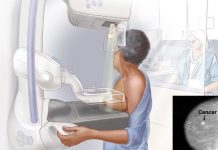Electronic patient records (EPR), electronic health records (HER), electronic medical records (EMR) or personal health record (PHR); whatever term you may use, they all mean roughly the same. Although some people differentiate among the various terms, I will use EHR to refer to all of them. An EHR system is the collection of patient medical billing information by use of digital and computer technology. All of the information related to the patient’s demographical information, insurance provider’s detail, health coverage plan data, medications, allergies, vital signs, and laboratory results, are saved on a single interconnected data-file. These records are shared via intranets on relevance basis with those who may need the information for better patient care. Everyone on the network does not have access to all of the patient’s information. The same records could be used for billing purposes, but the billers and insurance company may not have access to patient’s medical history or the daily vitals. Similarly, the pharmacist may have access to only the doctor’s prescription and allergies details.
Furthermore, Despite the various issues raised by many regarding the cost of implementation, patient’s privacy concern and technological problems, the patient protection and affordable care act (PPACA) also called “Obamacare” requires all the health service providers to implement EHR. EHR has now become a legal requirement. So, if you are health service provider, you should better make the most of it.

Benefits of EHR System
There are many benefits associated with an EHR system. Here are few of them:
- Better Patient Care
A properly managed EHR system makes all the relevant data available to the physician and others who are directly involved with patient care. They can better and informed decision about the patient’s care. If a physician is aware of the patient’s medical history or the history of the disease in the family, and other relevant information, this will reduce the chances of the physician making an incorrect diagnosis. Not only this, an EHR also let’s patient see their medical files and track their own improvement. They can also interact with doctors online and be aware of their health issue even better.
- Reducing errors in medical data
With electronic records keeping, there is zero percent chance of handwriting mistakes. All information entered is clear, and with pre-stored key terms entering information becomes faster. Furthermore, EHRs reduce duplication of records or mixing of test reports. Thus, an EHR results in better treatment, at lesser costs, and without catastrophic blunders.
- More secure patient information
Despite concerns raised over patient’s data security over the internet, in many ways the patient data is more secure with an EHR then with the traditional paper-based system. There have been incidents when thousands of paper-based records got lost in a natural disaster, like a fire or a hurricane. On the other hand, electronic database management ensures that there are proper backups available for any sort of calamity. Further, the EHR service providers have powerful measures in place to keep hackers and other intruders at bay.

Concerns Regarding EHR
Although, EHRs have shown their value in patient care improvement in countless cases; there have been serious concerns raised which cannot be ignored. Measures should be taken to overcome these issues. The various concerns that are often cited include:
- Security Measures May Not be Sufficient
Although the EHR companies spend heavily on improving patient data protection technology, the breaches of confidential data have not been completely stopped. With data protection technology improving, rogue hackers and crackers keep on finding new ways to access unauthorized data, often just to make a statement. Unless the world leaders can sit together and find means of eliminating the ease of access to hacking material, and regulating the technology, this threat cannot be eliminated. However, it is getting harder for the unauthorized users to hack into the system.
- Efficiency Issues
Despite the fact that many health service providers report increases in efficiency regarding costs and patient care. The gains in some cases may not be enough to outweigh the costs of implementation, especially in case of small establishments. Furthermore, the difficulty found by many physicians in handling the new digital forms may even increase patient diagnosis time instead of reducing it. Various studies over the years have raised questions about the cost savings claimed by the EHR service providers.
- Technical Issues
Apart from the cost issues, there have been problems reported as to the speed and usability of the devices provided to the doctors. There have been various incidents when the devices malfunctioned, which resulted in unintended errors in the patient records. As technology improves, these issues will be minimalized to an extent where they are of relatively little importance.




